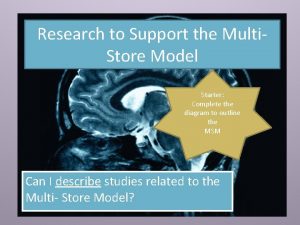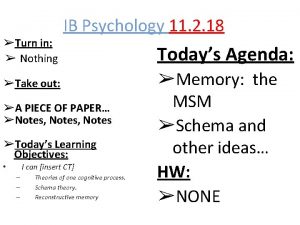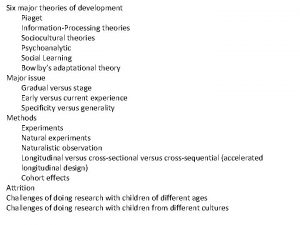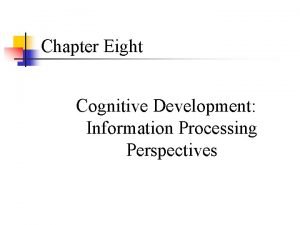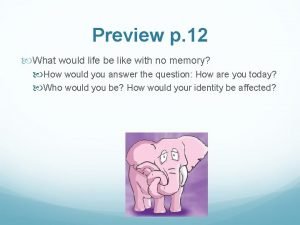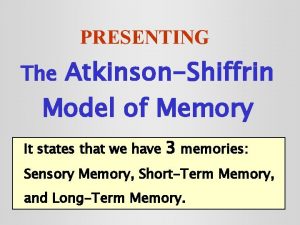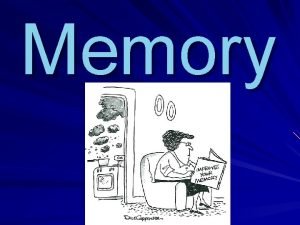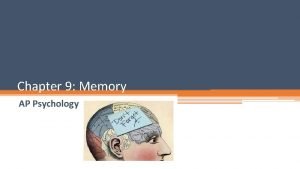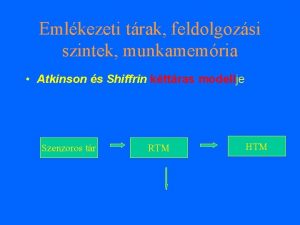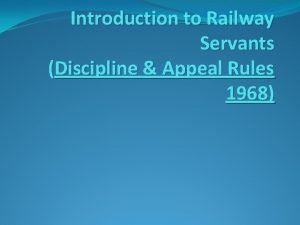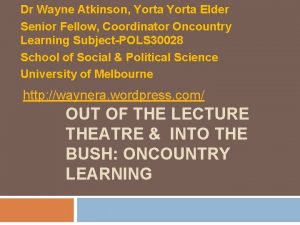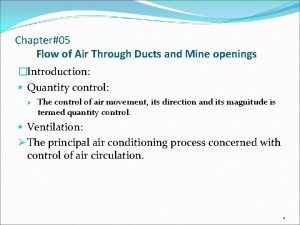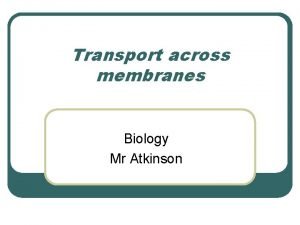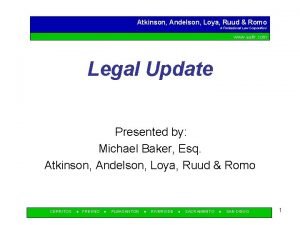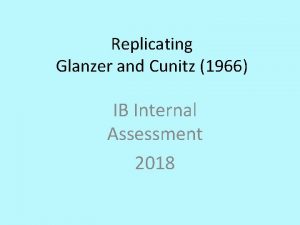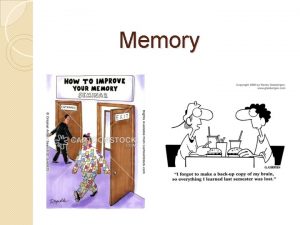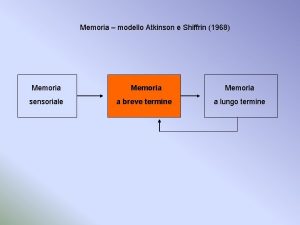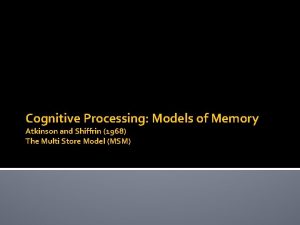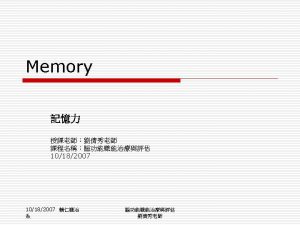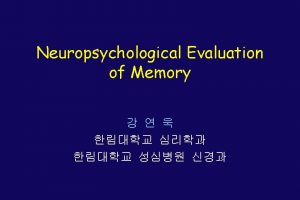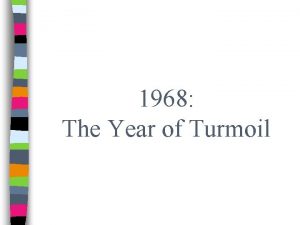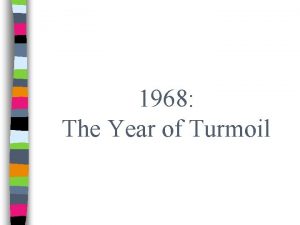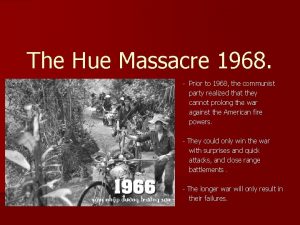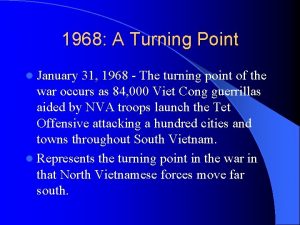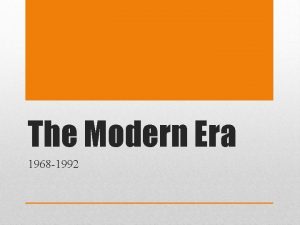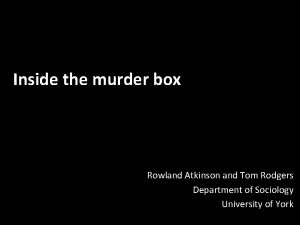Atkinson and Shiffrin 1968 4 Glanzer and Cunitz
































- Slides: 32




Atkinson and Shiffrin 1968 4


Glanzer and Cunitz 6





Cowan stm = 4 • • • Cowan, N. (2001) The Magical Number 4 in Short-term Memory: A Reconsideration of Mental Storage Capacity. Behavioral and Brain Sciences 24 distinction between a limited-capacity primary memory and an unlimited-capacity secondary memory was described by James (1890), Miller (1956) about 7 chunks in short-term memory (STM) tasks. more as a rough estimate and a rhetorical device than as a real capacity limit. Others have since suggested that there is a more precise capacity limit, but that it is only 3 to 5 chunks. Conditions to test • • (1) when information overload limits chunks to individual stimulus items, (2) when other steps are taken specifically to block the recoding of stimulus items into larger chunks, • - rehearsal and long-term memory cannot be used to combine stimulus items into chunks of an unknown size; • - nor can storage mechanisms that are not capacity-limited, such as sensory memory, allow the capacity-limited storage mechanism to be refilled during recall. • 11 Cowan : under these conditions: a capacity limit << Miller's 7 + 2 chunks : about 4 chunks

Cowan – opposing views • • 12 (1) There are capacity limits but that they are in line with Miller's 7+2 (Lisman & Idiart, 1995). (2) Short-term memory is limited by the amount of time that has elapsed rather than by the number of items that can be held simultaneously (e. g. , Baddeley, 1986). (3) There is no special short-term memory faculty at all; all memory results obey the same rules of mutual interference, distinctiveness, etc. (e. g. , Crowder, 1993). (4) There may be no capacity limits per se but only constraints such as scheduling conflicts in performance and strategies for dealing with them (e. g. , Meyer & Kieras, 1997). (5) There are multiple, separate capacity limits for different types of material (e. g. , Wickens, 1984). (6) There are separate capacity limits for storage versus processing (Daneman & Carpenter, 1980; Halford et al. , 1998). (7) Capacity limits exist, but they are completely task-specific, with no way to extract a general estimate. (This may be the "default" view today. )

1 בעיות של המודל המסורתי • נוירולוגיה • Patients with an STM deficit performed poorly on tasks such as immediate memory span and recency, • but were normal in their long-term memory performance. – • so dissociation into two systems BUT • the problem • if short-term system acts as a crucial antechamber to long-term learning, • such patients should have impaired learning capacity • should show poor performance on a wide range of tasks that were assumed to be dependent on the limited capacity shortterm system. • They showed no evidence of this • with one such patient an efficient secretary • another ran a shop and a family. 13



16

Working Memory Retention Systems: A State of Activated Long-Term Memory • • Daniel S. Ruchkin, Jordan Grafman, Katherine Cameron, and Rita S. Berndt Behavioral and Brain Sciences 2003 High-temporal resolution coherence studies • event-related brain potential (ERP) • electroencephalographic (EEG) • STM • the sustained co-activation of • both pre-frontal cortex and the • posterior cortical systems • that participate in the • initial perception • comprehension of the retained information • are involved in its storage. short-term storage mechanisms involve • neural synchrony pre-frontal cortex and posterior cortex, • activation of the long-term memory representations of the material held in short-term memory. • begins during the encoding/comprehension phase • prolonged into the retention phase by attentional drive from pre-frontal cortex control systems. 17

interpretation • the long-term memory systems • • associated with the posterior cortical processors provide the necessary representational basis for working memory, short-term memory decay being due to, primarily, the posterior system. no reason to posit specialized neural systems whose functions are limited to that of short-term storage buffers. Pre-frontal cortex provides the attentional pointer system for maintaining activation in the appropriate posterior processing systems. Limitations on the number of pointers that can be sustained by the pre-frontal control systems determines • short-term memory capacity • displacement of information in short-term memory. 18

anterior posterior LTM 19

WORKING MEMORY • neurological data: at least two STM memory systems • anterior (frontal) • semantic • uses active reverberations • can sustain themselves without repetition, (up to a point) • limited by displacement by competing new information • posterior • phonological • based on rehearsal • temporal decay and need for articulation 20

Working memory • רכיבים • articulatory (phonological) loop • visuo-spatial sketch pad cf Wickens cube • abstract semantic info. • tactile etc • procedural knowledge • a limited capacity attentional control system, the central executive 21

Consolidation of skills Shadmehr and Holcomb 1997 Shadmehr R, Holcomb HH. 1997. Neural correlates of motor memory consolidation. Science, 277: 821 -825, להניע זרוע רובוט - • מטלה ממוחשב positron emission • tomography (PET) • בזמן אמון הדם זרם ל prefrontal cerebral cortex • שתי קבוצות • קבוצה א • למדו וזכרו היטב posterior parietal and • דם זרם ל cerebella • קבוצה ב • ירידה בביצוע בזמן בדיקה 22

Consolidation of skills Shadmehr and Holcomb 1997 שעה - בדיקה שעות 6 חופשי - שעה 1 א אמון חופשי בדיקה 2 אמון 1 ב אמון Shadmehr R, Holcomb HH. 1997. Neural correlates of motor memory consolidation. Science, 277: 821 -825, 23

Conclusions • after practicing a new motor skill, it takes five to six hours for the memory of the new skill to move from a temporary storage site in the front of the brain to a permanent storage site at the back. • If interrupted by practicing another new skill, the learning of the first skill is hindered. • The shift of location of the memory in the brain is necessary to render it invulnerable and permanent. 24






30

31

 Atkinson and shiffrin 1968
Atkinson and shiffrin 1968 Glanzer and cunitz strengths and weaknesses
Glanzer and cunitz strengths and weaknesses Bransford and johnson (1972) ib psychology
Bransford and johnson (1972) ib psychology Vygosky theory
Vygosky theory Information processing theory by atkinson and shiffrin
Information processing theory by atkinson and shiffrin Atkinson and shiffrin model
Atkinson and shiffrin model Atkinson and shiffrin's three-stage model of memory
Atkinson and shiffrin's three-stage model of memory Atkinson shiffrin model of memory
Atkinson shiffrin model of memory Three-stage model of memory
Three-stage model of memory Discerning true and false memories
Discerning true and false memories Recencia hatás
Recencia hatás Shiffrin
Shiffrin Orne and holland 1968
Orne and holland 1968 Railway servants discipline and appeal rules 1968
Railway servants discipline and appeal rules 1968 Scout's brother in to kill a mockingbird
Scout's brother in to kill a mockingbird Jean louise to kill a mockingbird
Jean louise to kill a mockingbird To kill a mockingbird chapter 9 summary
To kill a mockingbird chapter 9 summary Atkinson's flexible firm model
Atkinson's flexible firm model Dr wayne atkinson
Dr wayne atkinson Atkinson equation ventilation
Atkinson equation ventilation Mr bean born
Mr bean born John atkinson psicologo
John atkinson psicologo Atkinson
Atkinson Morphodite in to kill a mockingbird
Morphodite in to kill a mockingbird Miss maudie atkinson quotes chapters 4-6
Miss maudie atkinson quotes chapters 4-6 Scotland suicide statistics
Scotland suicide statistics Sunday independent
Sunday independent Atkinson
Atkinson Betsy atkinson
Betsy atkinson Atkinson andelson loya ruud & romo
Atkinson andelson loya ruud & romo Motivazione atkinson
Motivazione atkinson Poppy atkinson
Poppy atkinson Dr christine atkinson
Dr christine atkinson

